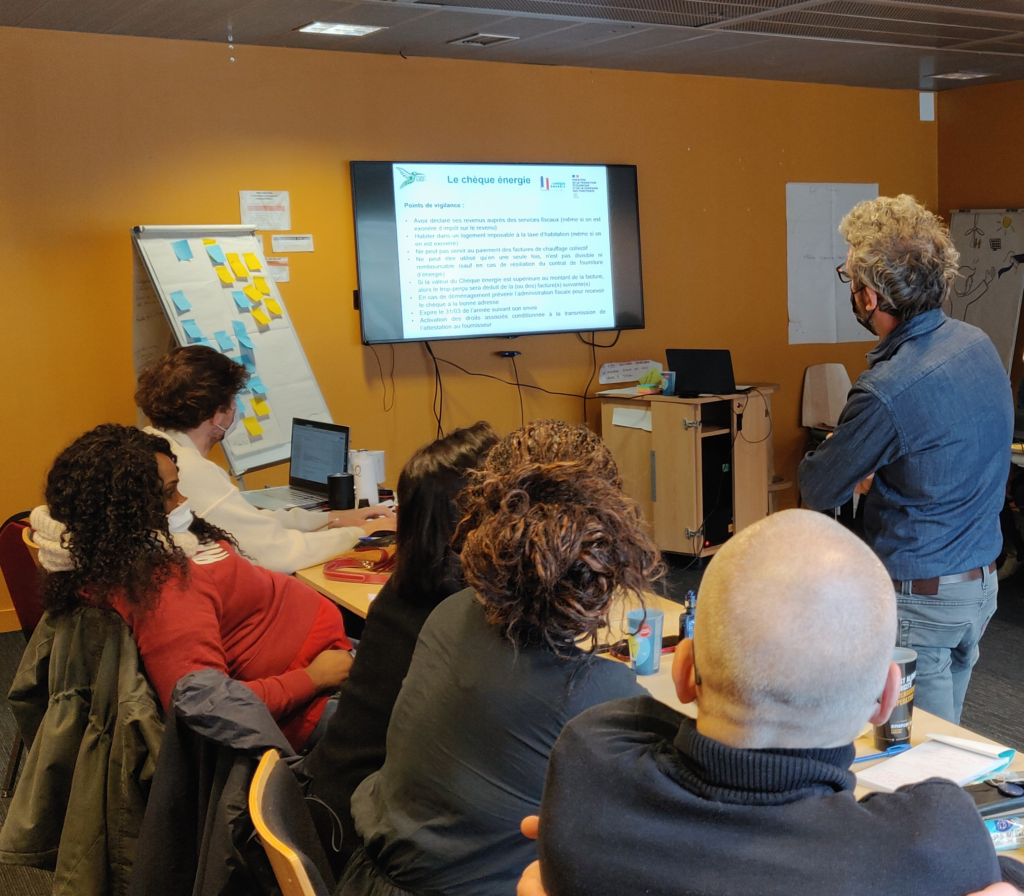Like all energy suppliers, Enercoop has some customers who fall behind on their bills. While participating in CEES, they’ve opted to better understand if such households are in vulnerable situations.
Enercoop members – which now number 93 500 across France – are committed to advancing a clean energy future, in part by helping create demand for clean energy supply. Generally, they accept that their tariffs are higher than those of major companies: on average, 11% above the country’s main energy supplier.
In the past, while Enercoop followed legal obligations for customers in arrears (Box 1), its main contact with such households was narrowly focused on establishing a collection plan. It did not consider whether they might be experiencing energy poverty.
To build the concept of energy solidarity into their policies and procedures, Enercoop created an endowment fund to finance actions to combat fuel poverty via micro-donations on energy bills (through another entity called Énergie Solidaire). Then, in February 2023, the company took this work further by forming a specific Solidarity Taskforce with a mandate to provide a more effective support system for customers in arrears.
A cultural shift for the common good
Previously at Enercoop, two departments were involved when customers fell behind on payments. The Recovery Department focused on setting up a repayment plan while the Customer Relations Department helped customers better understand their energy use and directed them towards government schemes to support energy renovation.
For the company itself, an overarching challenge was introducing the idea of providing energy solidarity services without creating extra work for already busy staff (available resources made it impossible to consider hiring new staff).
In turn, Enercoop needed to educate employees on ways to identify which customers may be experiencing energy poverty and how they could help. For this, Enercoop organised a training session, inviting external entities to deliver presentations on how France defines energy poverty, as well as its causes and consequences. Others explained the role of various actors and the range of interventions that could be proposed to Enercoop customers.

Armed with better knowledge, the next challenge was to create a comprehensive service plan. Now, when someone does fall behind on payments, an employee from the Recovery Department makes an initial call that is more focused on assessing whether the household is potentially vulnerable. The staff member then invites the customer to visit a newly developed area of the website, with information about how they can reduce energy consumption and what public aids are available.
The site also gives customers the option to contact the Solidarity Taskforce via email, at which point the Customer Relations Department steps in, helping identify solutions adapted to the specific situation, particularly directing clients towards different public aids related to finance and energy renovation. These employees also fulfil the role of linking customers to social workers or consumer associates in other entities.
To provide seamless support from both departments, Enercoop set up internal systems such as a ‘Solidarity Group’ channel within the customer service software, which both teams already use on a daily basis, to allow quick exchange.
Equipped with more knowledge and more efficient systems, the Solidarity Taskforce is now confident in their ability to help lift vulnerable clients out of energy poverty, including by directing them towards the appropriate services. And some clients are providing positive feedback on the relevance and usefulness of their recent interactions with Enercoop.
Drawing on the experience of other CEES partners
Enercoop drew inspiration from CEES partners that offer similar services and helped Enercoop establish the framework for its Solidarity Taskforce, as well as setting up necessary processes and procedures.
Repowering
Repowering has historically provided energy advice services in the Lambeth region of London, where a high proportion of residents live in fuel poverty. Experience built up over time highlights the importance of collaborative effort with other community actors. Accordingly, Repowering has offered training on fuel poverty to Community Energy Champions, frontline workers, and volunteers at other local organisations, and is currently working with local Community Leads to disseminate information through a wide range of community networks.
ALIenergy
In the remote, largely rural area of West Scotland where ALIenergy operates, more than half of households are living in energy poverty. ALIenergy has 20+ years’ experience in two types of alleviation efforts. In the short term, their ‘Affordable Warmth’ programme provides advice—largely through free workshops—on how use energy more efficiently. They also deliver ‘Cosy Kits’ for immediate relief and to help people stay warm. This includes a hot water bottle, blanket, thermal socks, night light torch, cold alarm, and advice leaflets—recipients have reported how much they felt loved and cared for after receiving one.
To tackle root causes of energy poverty over the longer term, ALIenergy refers eligible low-income households to government schemes that fund (at an average of €8 400 per household) home improvements (e.g. insulation in internal or external walls, lofts or underfloor; new windows; upgraded heating systems or appliances).